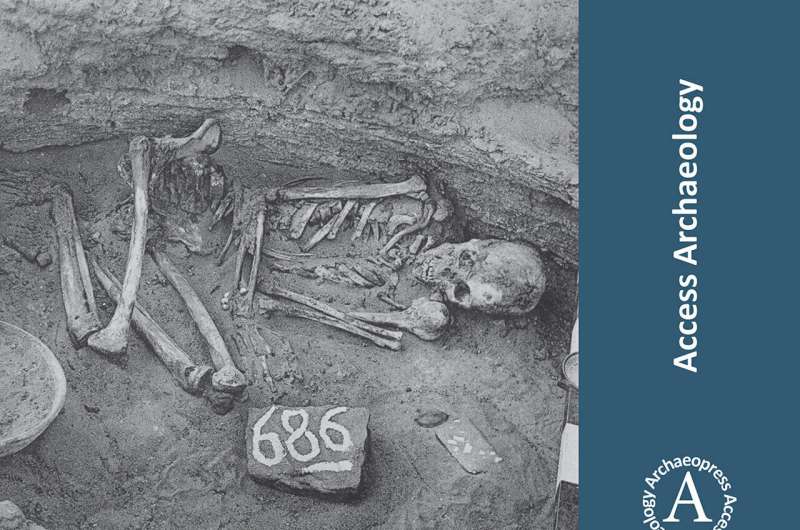This article has been reviewed according to Science X's editorial process and policies. Editors have highlighted the following attributes while ensuring the content's credibility:
fact-checked
trusted source
proofread
Chance find fulfills 110-year mission to give ancient Nubians a voice

A biomedical Egyptologist from The University of Manchester has fulfilled the mission of an illustrious Manchester anatomist from 1910, having by chance found his unique anatomical record of how ancient Nubians lived—and died—in Southern Egypt.
Dr. Jenny Metcalfe from the University's KNH Center for Biomedical Egyptology found the recording cards, thought to have been lost in World War Two, from one of the first ever excavations in Lower Nubia tucked away in a University of Cambridge archive.
Her book—"The Archaeological Survey of Nubia Season 2 (1908–9): Report on the Human Remains" and published by Access Archaeology—took 10 years of painstaking research into the 5,000 year-old community to complete.
A key figure in the second season of the excavation was Grafton Elliot Smith—an esteemed anatomist at the Victoria University Manchester and later knighted for his work.
Smith, a Professor of Anatomy at the University from 1909–1919, is perhaps more famous for his study of ancient Egyptian mummification.
However, he also carried out detailed studies of the ancient Nubian cemeteries due to be flooded by the heightening of the Aswan Low Dam between 1907–1912.
The dig—carried out in four seasons between 1907 and 1911—excavated a massive 151 Nubian cemeteries and discovered 20,000 graves, unearthing 7,500 bodies and their artifacts.
It is a unique record of the ancient communities living in that part of the Nile.
Anatomists Elliot Smith and Dr. Douglas Derry's meticulous work, measuring and documenting different anatomical features has made an important contribution to the study of anthropology, says Dr. Metcalfe.
However the excavations can pose some problems today, she adds, through the focus on racial stereotypes, common at the time, which has affected what was looked for and recorded by the anatomists. The approach has long since been dropped by modern Egyptologists.
The Nubian excavation was one of the first to include anatomists, with Smith and Derry overseeing the anatomical work during season 2.
The recording cards from seasons 3 and 4 of the Archaeological Survey of Nubia remain lost, however most of the cards for season 2 are now fully documented in the book.
These have been reunited with details from the small number of known surviving individuals from the collection and other documents to recreate the report Elliot Smith and Derry always intended to write.
Dr. Metcalfe said, "I was browsing through the archives at the Duckworth Laboratories in Cambridge and found the recording cards mixed up with those for another excavation directed by George Reisner a few years after the Archaeological Survey.
"Tucked away in the same files were the recording cards of Elliot Smith and Derry's work that covered most of season 2 as well as 15 cards from season 1.
"I recognized the cemetery numbers straight away when I saw the cards; I've never been so excited as it was assumed they had been kept with the season 1 cards in the Royal College of Surgeons.
"These cards, together with a lot of the bodies from the excavations, were destroyed by a bomb during World War Two.
"I then knew that I would need to research and document them, so I could give these ancient people their rightful place in the historical record.
"It is so important to give the people who lived there a voice. For so long, our understanding of the communities who lived along the Nile was incomplete. But now, we've found a missing piece in the jigsaw."
She added, "This work provides us with a huge amount of information on disease, trauma and anatomical variations seen in these ancient communities.
"We have a slightly more complete picture about what life was like in ancient Nubia. This helps us to understand how diseases spread in different populations through time which is still relevant today.
"I'd love to find the remaining records or identify more of the individuals found. Although this seems unlikely, you never know when another chance discovery might be made."
More information: The Archaeological Survey of Nubia Season 2 (1908–9): Report on the Human Remains
Provided by University of Manchester



















